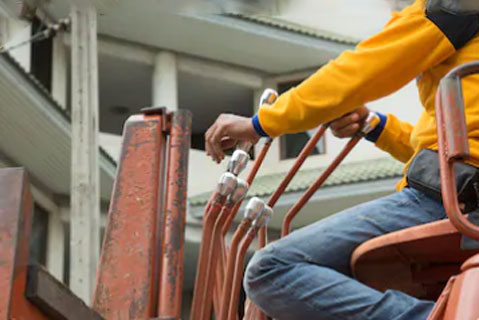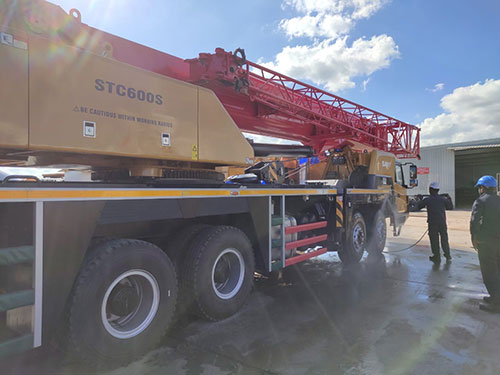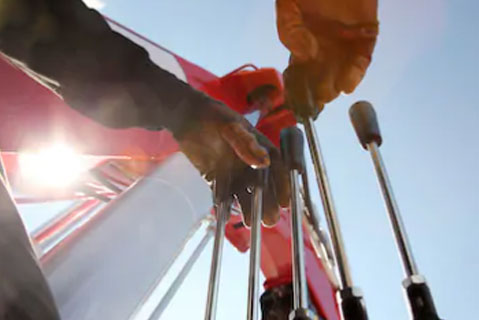Safety Measures to Consider while Handling the Cranes
Crane accidents can be very costly in terms of equipment losses, damage to the property, and injuries to the workers. The direct costs associated with these damages, injuries and OSHA fines is very small when compared to the indirect costs related to damage lawsuits from the victims’ families and owners of the damaged property.
Let’s learn about some of the top safety measures that can be followed to avoid accidents due to mishandling of cranes.
Hire an experienced operator

Though the operator certification is not required, the safety conscious contractors and owners must be wise to use identical standards while hiring the crane operators. After all, crane in the hands of an unqualified operator can be a deadly weapon. The riggers should be trained properly on setting the crane up for specific load & circumstances.
Inspect

It is important to verify that the crane has received proper inspection in the beginning. Check the operating functions daily to ensure that everything is working properly and there are no cracks or defects in it. Cranes were made up of alloys, generation ago and were capable of handling overload and other abuse.
The modern-day cranes use materials which are less tolerant to mishandling. Overhead cranes used in heavy industries such a steel need to be inspected carefully.
Most of the cranes spend decades working in extreme work environments such as melt shops. The constant exposure to intense heat and temperature swings can cause beam and other structural members to become stiff.
Plan for the Swing
It is important to ensure that the area within that radius of crane operation must be barricaded to establish a control zone for those authorized to work in that area. Also examine the area carefully to check there are no objects the boom might strike such as power lines.

Use Cranes Properly
The cranes are engineered for vertical lifting and this doesn’t stop the crews from trying to use them for side loading or other improper activities. Using a crane to drag something across the ground or from under an obstacle puts extreme stress on boom, turntable and all structural members. This weakens the key components, leading to their failure. If someone on site has mishandled the crane, be sure to inspect it thoroughly.
Pay Attention
There are plenty of construction and manufacturing sites where operators are talking on cell phones while handling the crane., napping between the lifts, or are getting distracted in some or the other way. Everyone on the construction site needs to be alert and stay focused on the job at hand.
Avoid Man-Baskets
There are sites where employees lift the man-basket to the work area. However, this approach creates hazards that must be tested and addressed before the work starts, such as verifying the basket capacity, providing proper fall protection and checking if the basket is attached properly.
The safety of employees in the basket is totally dependent on the skills of the operators. Before you use the man-baskets, consider whether an articulating boom lift or a scissor lift can provide a safer alternative.
Don’t Use Cranes for Storage
It is not at all unusual to see the laborers end their workday by attaching compressor or similar type of equipment to the crane and suspending it for the safekeeping. This is one of the most common practices used but can be really risky. Someone could walk beneath it and a strong wind could cause the load to sway calling the risks.
Most of the modern-day cranes are hydraulically operated and a small leak anywhere in the system will reduce the hydraulic pressure to the point where boom will drop. The suspended weight will fall on whatever below it, maybe a more expensive piece of equipment.
Start with a Plan
Each lift is different from other, and it is important to review the load weight capacities, possible effect of wind, integrity of the equipment and other factors. The riggers, operator and other workers involved with the lift should be the part of planning process.
After all, standards requiring tag lines on capacity limits, loads, ground stability and other factors have been adopted because the incidents, injuries and fatalities demonstrated a need for them. Ensuring that your operators and workers have adequate education, provided proper training and have proper experience will safeguard everyone involved in the process.
The Bottom Line
Cranes do most of the heavy lifting in construction and industrial workspaces. They are some of the most important and essential equipment in any production facility job site or a logistics hub. Multiple industries count on these cranes to perform the tasks that are beyond human capabilities.
Even though they are a constant presence in the workplaces, we may take them for granted and ignore the dangers they might pose. When cranes are operated with a focus on safety, they are a vital piece of equipment. When they are sued carelessly, they can cause accidents and become a serious hazard to people and property. Follow the above listed safety measures whenever you are at construction sites.
Why you should rent a crane from Jainex?
Jainex Group is the leading crane rental service in India that operates in major metropolitan cities of the country such a Delhi, Gurugram, Kolkata, Mumbai and few cities of the North-Eastern states (such as Assam, Arunachal Pradesh, Tripura, Mizoram, Manipur, Nagaland, Meghalaya and West Bengal).
The crane operators are vastly experienced and skilled to operate the cranes professionally while the cranes go through annual maintenance to avoid any mishap at the construction site.
Looking to hire a crane. Choose Jainex for all your crane-rental needs.










